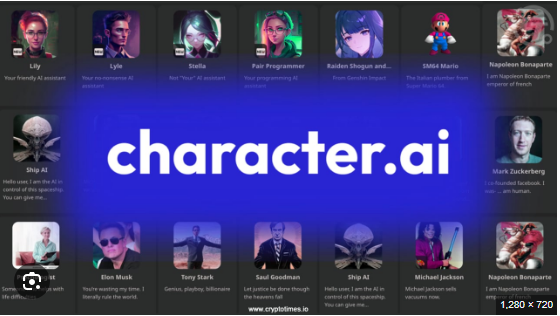As artificial intelligence becomes increasingly integrated into our daily lives, tools like Character AI (Character.AI)—a platform that allows users to create and chat with AI-generated personalities—have surged in popularity. These platforms offer immersive, conversational experiences with fictional or real-world personas, all powered by advanced natural language processing models. But with rising usage comes a pressing question: Is Character AI safe?
To answer this, we must explore safety from several angles: privacy and data security, psychological well-being, content moderation, ethical concerns, and platform transparency.
1. Understanding Character AI
Character AI is a platform where users can interact with AI personas. These “characters” can be based on celebrities, historical figures, fictional characters, or completely original creations is character ai safe The AI behind the scenes uses powerful large language models (LLMs) to generate responses in real time, making the interactions feel human-like.
The platform is popular for entertainment, roleplaying, emotional support, and even creative writing. But its open-ended nature also leads to complex safety questions.
2. Data Privacy and Security
One of the primary concerns surrounding any AI platform is how it handles user data. When chatting with a character, users often reveal personal thoughts, emotions, or even identifiable information, either intentionally or inadvertently.
Key Privacy Risks:
- Data Logging: Character AI may log user interactions to improve the AI’s performance. While this is standard practice for most AI platforms, users often don’t realize how much information is retained or used.
- Lack of End-to-End Encryption: Unlike secure messaging platforms, Character AI may not use end-to-end encryption, meaning conversations could potentially be accessed by the platform’s administrators or developers.
- Data Usage Transparency: There is often insufficient clarity about whether the data is sold to third parties, used to train new models, or kept indefinitely.
Mitigation Tips:
- Avoid sharing real names, locations, or sensitive personal information.
- Read the platform’s privacy policy carefully.
- Use the platform anonymously if possible.
3. Content Moderation and Exposure to Harmful Material
Another significant safety concern is exposure to harmful or inappropriate content. AI characters can, at times, produce offensive, biased, or suggestive language, especially if they are not properly moderated.
Potential Risks:
- Unfiltered Roleplay: Users may create or engage with characters that mimic violent, explicit, or otherwise inappropriate behavior. While Character AI has moderation systems, they are not foolproof.
- Reinforcement of Harmful Beliefs: If a user interacts with an AI character that encourages negative or self-destructive thoughts, it may reinforce harmful beliefs rather than offering healthy guidance.
- Influence on Young Users: Teens and children may be drawn to AI characters for emotional connection but could inadvertently access adult or psychologically manipulative content.
What Character AI Does:
- The platform uses filters and safety layers to prevent certain types of explicit content.
- It encourages users to report inappropriate characters or conversations.
- Characters are typically labeled with content ratings or guidelines.
Despite these measures, automated moderation is imperfect, and users can still encounter unsafe content, especially when characters are designed with adult or controversial themes.
4. Psychological Impact and Emotional Dependency
A subtler but important safety issue is the emotional effect of interacting with AI characters, especially for vulnerable individuals.
Psychological Risks:
- Emotional Dependency: Users may develop attachments to AI characters and substitute them for real-life relationships, leading to social withdrawal.
- Escapism: While escapism can be harmless in moderation, relying on AI interactions to avoid real-world problems can hinder emotional growth and resilience.
- False Empathy: AI can simulate empathy, but it does not truly understand or care. This can create an illusion of connection that some users might misinterpret.
Benefits (When Used Responsibly):
- Provides a safe space to express emotions or practice conversations.
- Offers companionship for those experiencing loneliness or social anxiety.
- A creative tool for writers and artists to explore dialogue or character development.
The key is balance and awareness—recognizing the AI’s limitations while enjoying its potential.
5. Ethical and Social Concerns
The open-ended nature of AI character platforms leads to ethical gray areas, especially in terms of content creation, roleplay, and mimicry.
Ethical Red Flags:
- Impersonation of Real People: Some characters mimic celebrities or public figures, raising issues of consent and defamation.
- Recreation of Controversial Characters: Users may create characters based on criminals or historical figures with unethical views, potentially glorifying harmful ideologies.
- Use in Manipulative Scenarios: AI can be programmed to emotionally manipulate users under the guise of fiction.
These ethical challenges underscore the need for stronger oversight, clearer community guidelines, and user education.
6. Platform Transparency and Accountability
An important dimension of safety is how transparent and accountable the platform is. Does Character AI make it easy for users to understand how the system works? Are there clear processes for reporting abuse?
What’s Working:
- Character AI has a community-driven model where users can report issues.
- Moderation tools are present, and characters can be flagged or removed.
- The company provides basic transparency about how characters are generated.
What Could Improve:
- Clearer explanations of how user data is stored and used.
- Better auditing tools for AI-generated content.
- External review or third-party oversight to ensure safety protocols are in place.
7. How to Use Character AI Safely
Here are practical steps for safer interaction:
- Don’t share personal or sensitive information. Treat conversations as public.
- Monitor minors using the platform, and enable parental controls if available.
- Avoid characters with unmoderated or mature content unless you are prepared to handle it.
- Set emotional boundaries. Remember, AI is a tool, not a therapist or friend.
- Use official and verified characters. Be cautious with user-created ones that have no moderation history.
- Report harmful content when you see it.
8. Conclusion: Is Character AI Safe?
The answer is yes—with caveats. Character AI can be safe if used with awareness, discretion, and proper boundaries. For adults who understand the limitations of AI and maintain a healthy relationship with the platform, it can be a fun and even beneficial tool is character ai safe But for younger users, emotionally vulnerable individuals, or those unaware of the risks, the platform may pose significant safety concerns.
Ultimately, the responsibility lies both with the platform developers to ensure robust safety measures and with users to engage responsibly. As with any technology, the safest experience comes from informed usage, clear boundaries, and regular self-reflection.








